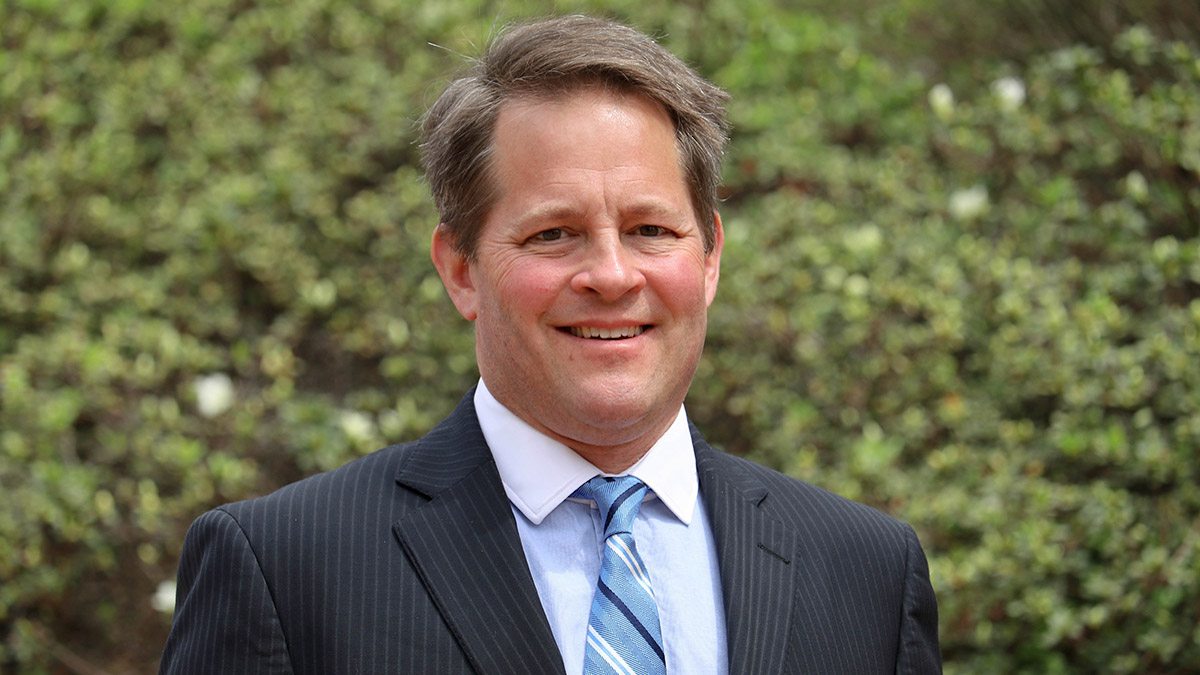Carolina’s chief sustainability officer explains the University’s new Climate Action Plan
Michael Piehler details Carolina's new Climate Action Plan, which was announced April 16. The new, aggressive strategy sets the University on a path to be carbon neutral by 2040.

Combating climate change requires ambitious institutional goals, and Carolina’s new Climate Action Plan, which updates the previous version from 2009, entails precisely that.
The new plan, announced April 16, presents a more aggressive strategy for the University to reduce its greenhouse gas emissions and reach carbon neutrality by 2040, instead of the previously proposed 2050. Since 2009, Carolina has reduced greenhouse gas emissions by 24%, even as the campus grew by 27%. The new plan accelerates that already strong start.
Chief Sustainability Officer Michael Piehler is the leader behind the new plan, and he has a bold vision. He stepped into the role last September, quickly grasping the possibility of integrating the University’s larger climate and sustainability goals with its mission for education, research and service.
Piehler discussed the Climate Action Plan’s new goals and why it’s important for us, as an institution and as individuals, to work toward a more sustainable future.
Why is it important to be proactive about climate change?
It’s no longer a matter of looking into the future. It’s a challenge that we’re facing now. As a great research institution, the University needs to be on the frontline of being responsible, proactive and innovative, and coupling our climate activities with our conventional pillars of education, research and service.
Why does Carolina have a vested interest in improving its Climate Action Plan?
There are so many reasons, but working toward the shared goals of our community and state and having an ambitious model for our University to coalesce around are two critical reasons. The transition that the University is going through is very similar to the transition the state is going through, which is pretty related to the transition the rest of the country is going through. These things scale. It’s not as though the activities we’re taking on are unique; they’re the set of actions that organizations have to undertake to get to the right place.
From an educational perspective, we need to be teaching our students how to solve these problems. It’s a giant opportunity. There are amazing jobs dedicated to tackling challenges around sustainability and related environmental challenges. From my perspective, that’s a great way that Carolina’s sustainability operations can help inform our leaders of tomorrow.
What are some of the new goals in the updated Climate Action Plan?
Carbon neutrality is the core goal of the Climate Action Plan, namely moving that transition from the previously planned date of 2050 to 2040, which is aggressive and reflects acknowledgments of the need to act quickly. The 25 new strategies we’ve outlined accelerate our progress in decreasing greenhouse gases in part through new technology that wasn’t previously available and also continuing our transition from fossil fuels toward renewable energy.
Is there anything individuals can be doing to help the University achieve these goals?
Individual action is key to the success of the plan, but many of the prominent targets are institutional assets. As we continue our success with large targets, we’ll be thinking more about the role that individual changes can play. There’s a section in the plan that outlines what individuals can do. Activities like heating and cooling, commuting and travel for work have an effect, so hopefully, our Climate Action Plan will draw attention to the broader issues and get more people thinking about it.
What most excites you about this version of the plan?
I want to have a stream of exciting accomplishments that meet all of our goals, which includes moving the University’s sustainability mission forward, engaging our campus, capturing innovation throughout campus, and then integrating everything back in with the University’s missions around education, research and service. We are the University of North Carolina, and a big part of that is being responsible to North Carolina. We have a plan that’s aggressive, tenable and will get us to the place we need to be sooner than we thought we might be able to.
Right, cutting that carbon neutral goal by 10 years is significant.
It’s huge. It’s aggressive. I said when I started this position that we were going to think big. We were going to set aspirational goals that really push us. I’m excited to have a new plan to move the University forward in so many ways.




